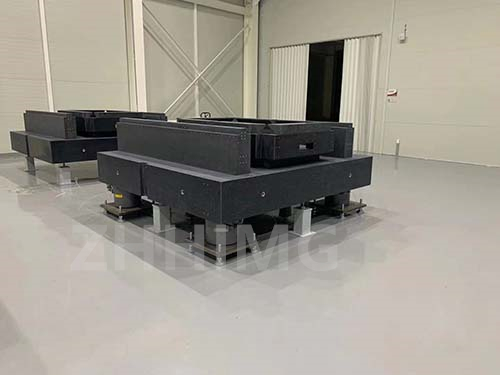Granite components are widely used in the manufacturing of LCD panels due to their excellent strength, stability, and resistance to temperature changes. However, despite their effectiveness, these components are not without their defects. In this article, we will explore some of the drawbacks of granite components in LCD panel production.
One of the most significant flaws of granite components is their weight. Although granite is a sturdy material, its weight can cause issues in LCD panel production. Handling heavy granite components in large quantities can be cumbersome and pose a safety risk to workers. Moreover, the weight of these granite components can also limit the mobility and flexibility of the machines and affect their overall efficiency.
Another drawback of granite components is their susceptibility to cracks and fractures. Despite being strong, granite is still a natural stone that can develop cracks due to environmental stressors like temperature fluctuations and shock impact. Unfortunately, even the smallest of fractures in a granite component can cause significant disruptions in the production process, resulting in delays and loss of revenue for the manufacturer.
Another significant drawback of granite components is their high cost. Granite is an expensive material, and acquiring components made of it can be prohibitive for some manufacturers. The cost of granite components can be further compounded by additional expenses like transportation, installation, and maintenance. These expenses can add up quickly and may lead some manufacturers to look for more affordable alternatives.
Despite these flaws, granite components are still a desirable material for many manufacturers due to their durability, precision, and stability. However, the issues caused by the weight, fragility, and cost of granite components cannot be ignored. Manufacturers need to take these drawbacks into consideration when deciding on using granite components in LCD panel production.
To mitigate some of these issues, manufacturers can look for alternatives to using large granite components where possible. This can involve looking for lighter weight materials or reducing the size of the components to make them easier to manage. Additionally, manufacturers can also invest in quality control measures to ensure that they can catch any potential defects or issues with their granite components before they cause a breakdown in the production process.
In conclusion, while granite components offer many advantages in LCD panel production, they are not without their flaws. The weight and fragility of granite components can pose challenges in their handling and increase their susceptibility to damage. Additionally, the high cost of granite components may make them unaffordable for some manufacturers. However, these drawbacks should not overshadow the many benefits that granite components offer, and manufacturers should continue to explore ways to make use of this valuable material in their production processes.
Post time: Nov-29-2023

